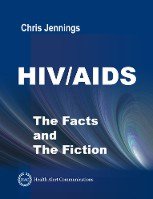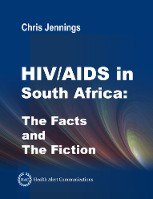In this brief teaser video, Chris Jennings describes how HIV/AIDS migrated from the primary European epicenters of Paris and Belgium to the former Francophone (french-speaking) colonies of Zaire (now called the Congo), Mali, and Rwanda; demonstrating again how disease follows trade routes (as known since the time of the sailing ships).
This brief video is an excerpt from Chris Jennings full lecture: New York City – The Epicenter of the HIV/AIDS Epidemic, which summarizes the first portion of Chris Jennings seminal book, HIV/AIDS – The Facts and The Fiction. The full lecture, New York City – The Epicenter of the HIV/AIDS Epidemic, will be broadcast as a Facebook Premier Event on November 3, 2020. Sign up for the Event here.
Date: November 3, 2020
Time: 1 PM EST (18:00 GMT)
Web Link: To Be Announced
Click Here to Join the Facebook Event
Click Here to Subscribe to our Newsletter for Updates
HIV/AIDS Migrates from New York City to Johannesburg
The first Africans diagnosed with AIDS were two white gay men who lived in the Johannesburg, South Africa [1].
“During 1981, large numbers of cases of two hitherto uncommon diseases, Kaposi’s sarcoma and Pneumocystis carinii pneumonitis, occurred among male homosexuals in the USA. We report 2 cases in South African male homosexuals, both of whom had visited the USA before the development of their disease [1]. ”
They were two gay white men; both air stewards who flew the Johannesburg to New York City route. The first man had traveled regularly to the USA in his work, and had lived in New York City for 5 years. He presented in early 1982. The second patient was a sexual partner of the first man, and had visited the USA 3 to 4 months prior to the onset of illness [1, 2]. Continue reading
As described in Part I of this article, few people realize that the familiar HIV/ AIDS global statistics are actually estimates. For example, UNAIDS estimated that the Republic of South Africa had 140,000 HIV / AIDS deaths in 1997 [1]. However, after tabulating all death certificates for 1997, the Republic of South Africa attributed only 6,635 deaths to HIV / AIDS [2].
 The situation with the African HIV / AIDS epidemic is analogous to that of the global finance crisis. Thousands of diligent people are investing money, effort, heart and soul into a false conceptual paradigm, while a small number of people aware of the situation are unconscionably reaping financial and professional rewards. Relative to HIV / AIDS, the false operative paradigm is that HIV / AIDS is devastatingly epidemic in Africa.
The situation with the African HIV / AIDS epidemic is analogous to that of the global finance crisis. Thousands of diligent people are investing money, effort, heart and soul into a false conceptual paradigm, while a small number of people aware of the situation are unconscionably reaping financial and professional rewards. Relative to HIV / AIDS, the false operative paradigm is that HIV / AIDS is devastatingly epidemic in Africa.
 HIV/AIDS statistics in South Africa (and Botswana) are entirely implausible. Given the known rates of HIV sexual transmission during vaginal intercourse, the purported current rates of HIV prevalence among the heterosexual adults of these countries exceed all plausible limits of human sexual activity. In this video presentation, Chris Jennings explains why the statistics for HIV/AIDS prevalence in South Africa are entirely implausibility (with mention of Botswana and New York City).
HIV/AIDS statistics in South Africa (and Botswana) are entirely implausible. Given the known rates of HIV sexual transmission during vaginal intercourse, the purported current rates of HIV prevalence among the heterosexual adults of these countries exceed all plausible limits of human sexual activity. In this video presentation, Chris Jennings explains why the statistics for HIV/AIDS prevalence in South Africa are entirely implausibility (with mention of Botswana and New York City).
 The first Africans diagnosed with AIDS were two white gay men who lived in the Republic of South Africa [1]. (The Republic of South Africa is typically referred to as “South Africa.”) As was typical for every AIDS case outside the United States early in the AIDS epidemic, both of these South African gay men caught AIDS in the United States.
The first Africans diagnosed with AIDS were two white gay men who lived in the Republic of South Africa [1]. (The Republic of South Africa is typically referred to as “South Africa.”) As was typical for every AIDS case outside the United States early in the AIDS epidemic, both of these South African gay men caught AIDS in the United States.
Both of these men were gay male air stewards (flight attendants) who had visited the United States before the development of their disease [1], and both died from Pneumocystis carinii pneumonia (PCP), a classical early-onset opportunistic infection secondary to HIV infection.
 Will Solimene Award from American Medical Writers Association (AMWA) Recognizes the Innovative Research, Definitive Analytics, and Scientific Conclusions challenging HIV/AIDS Statistics in South Africa
Will Solimene Award from American Medical Writers Association (AMWA) Recognizes the Innovative Research, Definitive Analytics, and Scientific Conclusions challenging HIV/AIDS Statistics in South Africa
Cambridge, Massachusetts, U.S.A.: The book HIV/AIDS in South Africa by Chris Jennings was awarded the 2014 Will Solimene Award for Excellence in Medical Communication. The Solimene Award recognizes outstanding work in medical, biomedical, and health communication published during the previous two years.

Is the use of estimates in measuring HIV/AIDS leading to other diseases being wrongly classified?
Few people realise that the familiar HIV/AIDS global statistics that one sees, hears, and reads in the media are actually just estimates. The numbers you hear are not actual counts of HIV/AIDS cases nor actual counts HIV/AIDS deaths. Only estimates generated by computers.
For example, UNAIDS estimated that South Africa had 140,000 HIV/AIDS deaths in 1997. However, after tabulating all death certificates for 1997, South Africa attributed only 6,635 deaths to HIV/AIDS.



